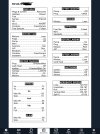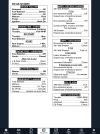akpao
Filing Flight Plan
I've been using the trusty CheckMate checklists since day one, but I'm getting to a point where I'd like to make some custom additions/modifications.
My leaning is to keep it simple and just use custom Foreflight checklists.
I like that this gives the ability to modify a checklist instantly and easily, I can't physically lose it, and I always have a backup on my phone.
On the other hand, the checklist functionality in FF seems kind of clunky, initial set up might be a pain, and I think I'd need to keep a paper checklist in the cockpit as backup because I can't imagine tabbing over on FF in an emergency scenario.
With paper, I could typeset and print/laminate my own, but that of course adds difficulty in making changes or updates and is even more work to get started with.
Would be grateful for thoughts and guidance!
My leaning is to keep it simple and just use custom Foreflight checklists.
I like that this gives the ability to modify a checklist instantly and easily, I can't physically lose it, and I always have a backup on my phone.
On the other hand, the checklist functionality in FF seems kind of clunky, initial set up might be a pain, and I think I'd need to keep a paper checklist in the cockpit as backup because I can't imagine tabbing over on FF in an emergency scenario.
With paper, I could typeset and print/laminate my own, but that of course adds difficulty in making changes or updates and is even more work to get started with.
Would be grateful for thoughts and guidance!







